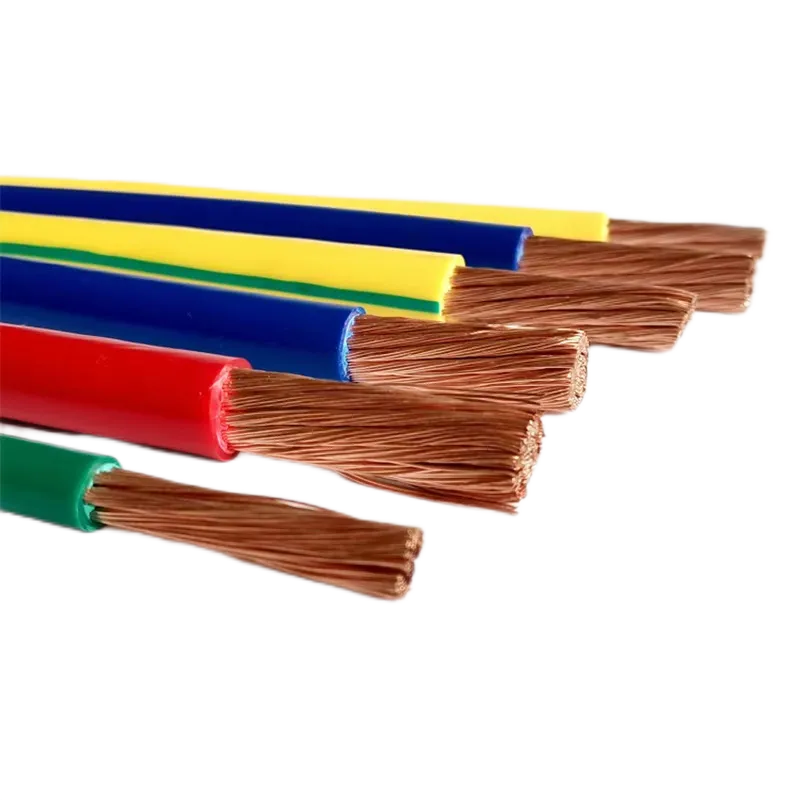Time: 2025-04-17 15:51:55 Source: Henan Province Jianyun Cable Co., Ltd.

Residential homes use specific types of electrical wires designed for safety, ease of installation, and compliance with local codes like the National Electrical Code (NEC). These wires are typically low voltage, operating at 120/240 volts in the US, and are insulated to prevent shocks. Here are the most common types:
| Wire Type | Description | Typical Use | Gauge (AWG) |
|---|---|---|---|
| NM-B (Romex) | Non-metallic sheathed cable with insulated wires and a ground | Indoor outlets, lighting, appliances | 14 AWG (15A), 12 AWG (20A) |
| UF-B | Underground feeder cable, moisture-resistant | Outdoor or underground wiring | 14 AWG to 10 AWG |
| THHN/THWN | Single insulated wire, used in conduit | Wet areas, conduit runs | 14 AWG to 10 AWG |
| Low Voltage Wire | Thin wires for low-power devices | Thermostats, doorbells, landscape lighting | 18 AWG to 22 AWG |
NM-B is the go-to for most indoor applications, while UF-B and THHN/THWN are used in specific scenarios like outdoor or wet locations. These wires are like the pipes in a plumbing system, delivering electricity safely to every part of the home.
Choosing between 12-gauge and 14-gauge wire for outlets depends on the circuit’s amperage, the expected load, and NEC requirements. The gauge refers to the wire’s thickness—lower numbers mean thicker wires that can handle more current.
For most modern homes, 12-gauge wire is recommended for general-purpose outlets because it provides extra capacity, reduces voltage drop over long runs (e.g., over 50 feet), and meets stricter code requirements in some areas. However, 14-gauge wire is still acceptable for 15-amp circuits if the load is light. Using 12-gauge wire for outlets is like choosing a wider highway—it handles more traffic (current) with less strain.
In modern house wiring, a typical cable like 14/3 or 12/3 NM-B (with three conductors plus ground) contains four wires, each serving a distinct purpose in a circuit. Here’s what they are:
In a 14/2 or 12/2 cable, you’d have only three wires (black, white, and bare ground), as the red traveler isn’t needed for simple circuits. These four wires work together like a team of runners in a relay race, passing electricity safely from the panel to your devices and back.
Standard electrical wiring in a house refers to the typical setup and materials used to distribute electricity, adhering to codes like the NEC. It involves insulated copper wires, usually NM-B (Romex), operating at 120/240 volts in the US, with circuits rated at 15 to 50 amps depending on the load.
Standard wiring ensures safe, reliable power delivery, balancing functionality with safety. It’s like the blueprint of a house—designed to support everything you need while keeping you protected.
Residential homes use wires like NM-B for indoor circuits, UF-B for outdoor areas, THHN/THWN in conduit, and low voltage wires for specific devices. For outlets, 12-gauge wire is preferred for 20-amp circuits, while 14-gauge is suitable for 15-amp circuits with light loads. A typical house wiring cable includes four wires—hot, neutral, ground, and sometimes a traveler for three-way switches. Standard wiring involves NM-B cables, 120/240-volt circuits, and safety features like grounding and GFCI protection, ensuring a safe and efficient electrical system.